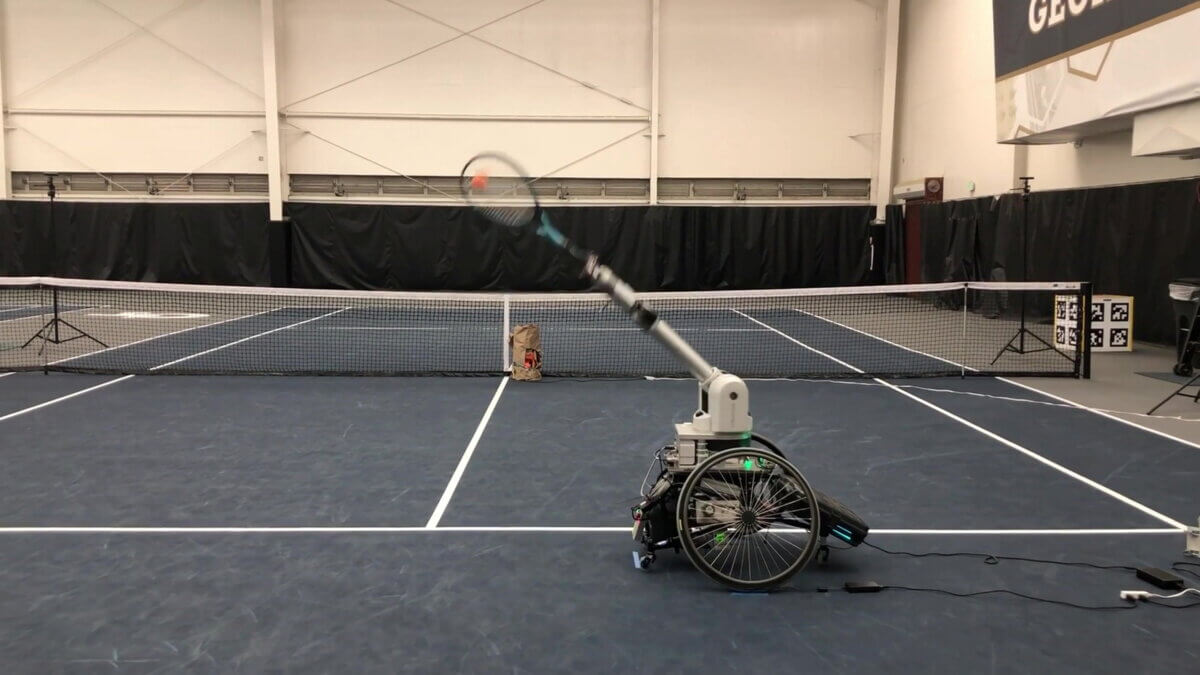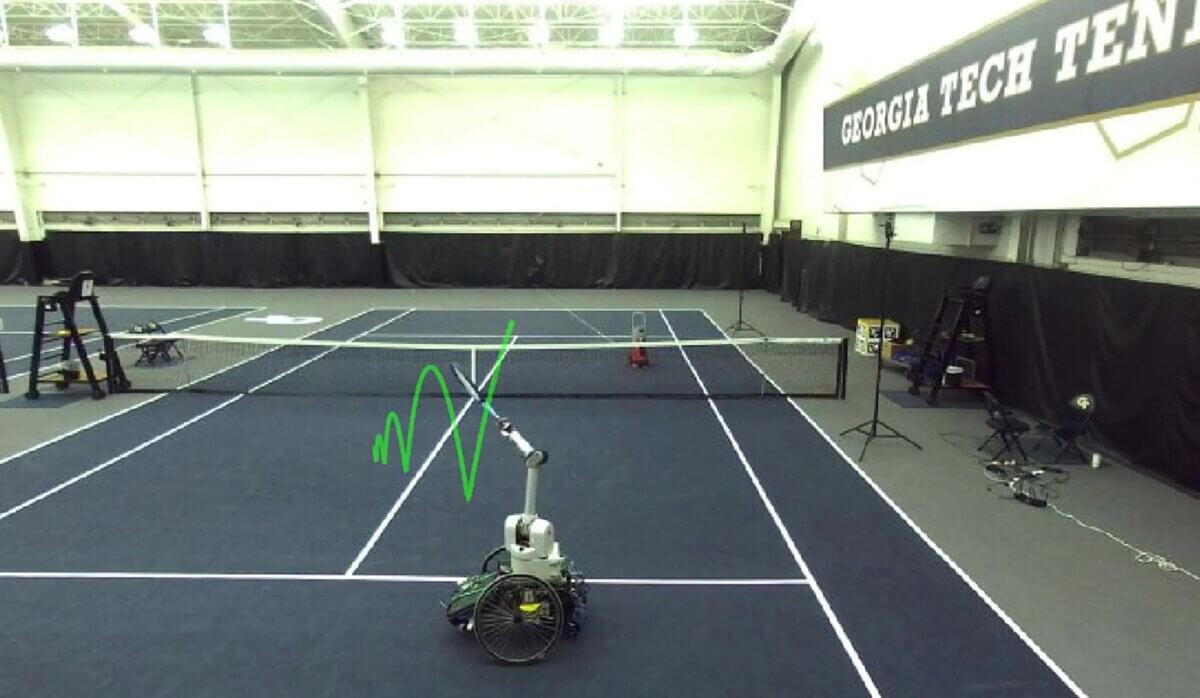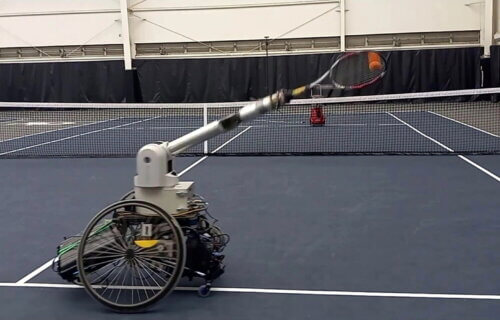ATLANTA — A fast-moving robot on wheels could one day challenge the best human tennis players at Wimbledon or the US Open — or replace them altogether! Scientists at Georgia Tech are calling this racket-swinging automaton ESTHER (Experimental Sport Tennis Wheelchair Robot), a robotic tennis player that can zip around the court and return human shots.
The sporty bot is the brainchild of Matthew Gombolay, an associate professor of robotics in the School of Interactive Computing. Gombolay wanted to develop a better training challenge than a stationary ball feeder, one that would act like an always on-call sparring partner or even team up in doubles matches.
The result is ESTHER, a modified tennis wheelchair that can race to balls at 10 meters per second and potentially outplay its human opponent.
“The wheelchair has the ability to rapidly move around the court and get into position to hit a ground stroke,” Gombolay explains in an online video. “ESTHER’s high-torque motors can surpass a tennis player’s average side-to-side acceleration, suggesting the potential to outmaneuver human opponents in future design iterations.”
“ESTHER can move up to two meters after the ball is launched to hit a successful return, which is comparable to the maximum distance moved by human players between 80% of shots,” the researcher continues.

The device was named in homage to renowned wheelchair tennis player Esther Vergeer, who held the world No. 1 ranking in women’s wheelchair tennis from 1999 until her retirement in 2013. Working with more than 20 students, Gombolay authored a paper on building ESTHER, which was accepted for publication in the Institute of Electrical and Electronics Engineers Robotics & Automation Society’s Automation Letters (IEEE RA-L).
The team arranged a network of high-resolution cameras around a tennis court and used computer vision algorithms to help ESTHER recognize an incoming tennis ball. Using cameras from different angles, they could triangulate where the ball is in space and feed this information to ESTHER. The team reached a breakthrough when they successfully and consistently programmed ESTHER to locate the tennis ball coming toward it, and to hit a return.

“It took us about two years to get to that point because nobody’s done this before,” Gombolay says. “We built this up from the ground up. Developing that capability was truly exciting.”
The team is now working on developing ESTHER to further simulate the experience of playing against a highly-skilled opponent.
“ESTHER opens up numerous exciting research opportunities in imitation learning, reinforcement learning, kinodynamic planning, human-robot collaboration and much more,” the researcher explains.
“What really excites me is that it could be a partner for me one day. It can also be my opponent. It can help me train. I could have it pretend to be the one guy I always lose to because he can exploit this weakness in my game. Training against an opponent is psychologically more stressful. Getting closer to simulating real match conditions can help you improve performance.”

Are robots the future of sports?
As major sports like baseball consider replacing umpires with robots, scientists are focusing on replacing the players themselves! In 2022, a team from Germany developed “Golfi,” a self-learning robot able to make perfect putts in golf.
The team at Paderborn University used data-driven and physics-based methods to have the robot autonomously learn to sink the golf balls from an arbitrary point on the green. Rather than sending the club-wielding bot onto the golfing circuit, however, scientists created Golfi to demonstrate how robots might assist humans in daily life.
“With the aid of autonomous robots, the everyday life of many people should be made easier in the near future, e.g., by supporting work in the care of elderly or physically impaired people. For this, a prudent action of the autonomous robot is essential,” the study authors write, according to a statement from SWNS.
South West News Service writer Dean Murray contributed to this report.

humans truly hate humans. why else would this robot be developed?
Wow, that is a pretty boring video. I think the word “could” in the article’s headline is a bit of a stretch based on what I saw.
Saying that this robot could “replace” pro tennis players is silly. The point of the game is for humans to compete against each other. That we have machines which propel themselves way faster than any human can run doesn’t lessen the interest in people racing against each other.